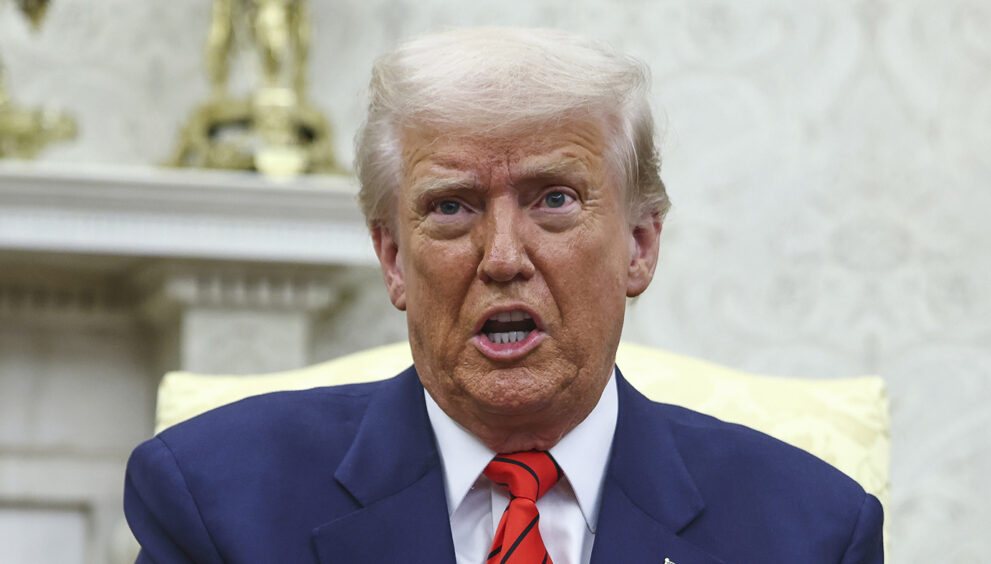Canada should challenge Trump’s threats by eliminating all tariffs

Currently, it seems that a full-blown trade dispute has erupted with the United States, our closest neighbor and ally.
Despite being deeply intertwined with the American economy, Canada has been hit hard by tariffs and has retaliated accordingly. The ruling Liberal Party, which was on the brink of political irrelevance not long ago, has experienced a resurgence in popularity as Canadians express their growing displeasure with the United States. Meanwhile, President Trump continues to suggest that Canada should abandon its nearly two centuries of independence and become the 51st state.
It might be time for an unconventional response to this unprecedented situation.
Trump’s focus on trade imbalances with other countries, viewing negative balances as either subsidizing other nations or being taken advantage of, is well-established. Many economists disagree with his perspective, some arguing that countries running trade surpluses are effectively subsidizing the United States instead. So, why is the President targeting Canada with such hostility?
For most of the past two decades, trade between the U.S. and Canada has been fairly balanced – exactly what Trump claims to want with all nations. Even though American reliance on Canadian energy has tipped the scales in Canada’s favor recently, the current trade deficit of roughly $45 billion is the second smallest among U.S. major trading partners, with only France having a smaller deficit. The deficit with Canada is one-fifth of the size of the deficit with Mexico and only one-eighth of the deficit with China.
When it comes to manufacturing, the United States actually exports more goods to Canada rather than importing. The integrated auto manufacturing sector between the two countries is a significant factor in this trend, although Trump has expressed disapproval, preferring that no American cars should be assembled in Canada. However, reshaping supply chains to ensure all cars are domestically produced would significantly increase manufacturing costs, leading to higher prices for American consumers. This could explain Trump’s delay in imposing tariffs on auto imports.
The key source of the trade imbalance with Canada appears to be U.S. imports of Canadian energy, especially oil from the west and electricity from the east.
A large portion of the U.S. refining industry relies on Canadian oil, making the transition to alternative sources costly. Ontario Premier Doug Ford once suggested a 25 percent surcharge on electricity exports, which would potentially raise electricity prices for consumers in states like Michigan and New York. However, this proposition was retracted after facing threats of additional tariffs.
Ford’s backtracking indicates that there are limits to the endless cycle of retaliatory measures in a trade war. It may seem that Trump’s claim that “trade wars are good and easy to win” is accurate. Still, sometimes the best way to win is not to engage. This applies to nuclear war and tariffs as well.
Canada could gain the upper hand in this situation through a surprising approach. Rather than merely removing retaliatory tariffs, Canada could eliminate all tariff and non-tariff barriers, embracing unilateral free trade.
Such a move would essentially call Trump’s bluff as he consistently emphasizes the importance of reciprocal or balanced tariff arrangements. This strategy would allow him to claim victory as per his rhetoric, as the U.S. would be pressured to reduce its tariffs in response.
Implementing this strategy would immediately benefit Canadian citizens, as prices would decrease as protected industries adjusted to the new market conditions. Moreover, American subsidies for the dairy industry would essentially become subsidies for Canada.
In the long run, Canadians could reinvest these savings into strengthening their defense sector, much like European nations have recognized the need to do under the current global climate led by Trump. The president has incorporated the expenditure of defending Canada into his argument of a $200 billion trade deficit. Should Canadians wish to maintain their independence, as demonstrated by public opinion polls, they should be willing to allocate funding properly, instead of spending less than 2 percent of GDP on defense.
As Nobel laureate in economics, Paul Krugman, highlighted in the 1990s, the economist’s argument for free trade is primarily a unilateral one – stating that a country serves its own best interests by pursuing free trade regardless of the actions of other nations. Krugman acknowledged that this mindset is difficult to sell to politicians, as Canadians would likely perceive it as a capitulation and national pride would be at stake.
However, opting for economic prosperity rather than a hollow victory in a trade conflict may be the most beneficial outcome for both Canadians and Americans in the end.
Iain Murray holds the position of senior fellow at the Competitive Enterprise Institute, a Washington D.C. based public policy organization advocating for a free market.






















































































































































































































































































































































































































































































































































































































































































































































































































































































































































































































































































































































































































































































































































































































































































































































































































































































































































































































































































































































































































































































































































































































































































































































































































































































































































































































































































































































